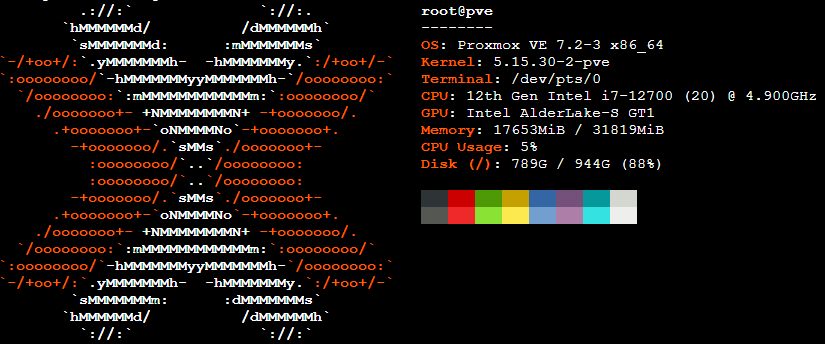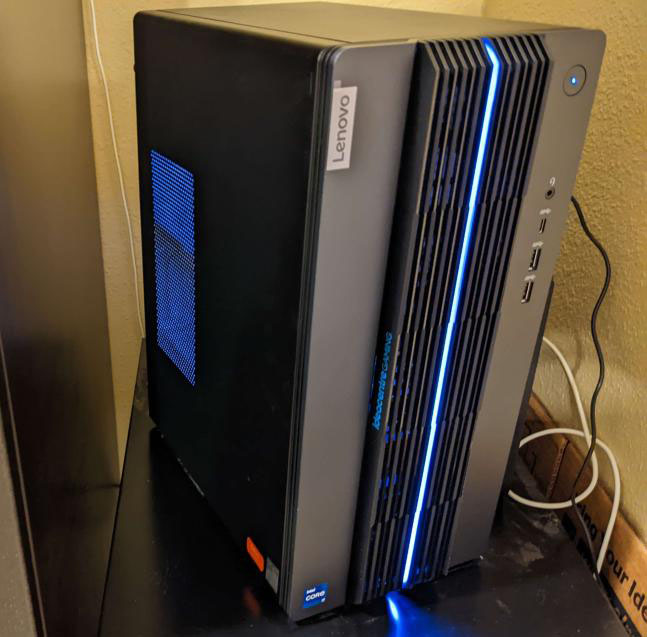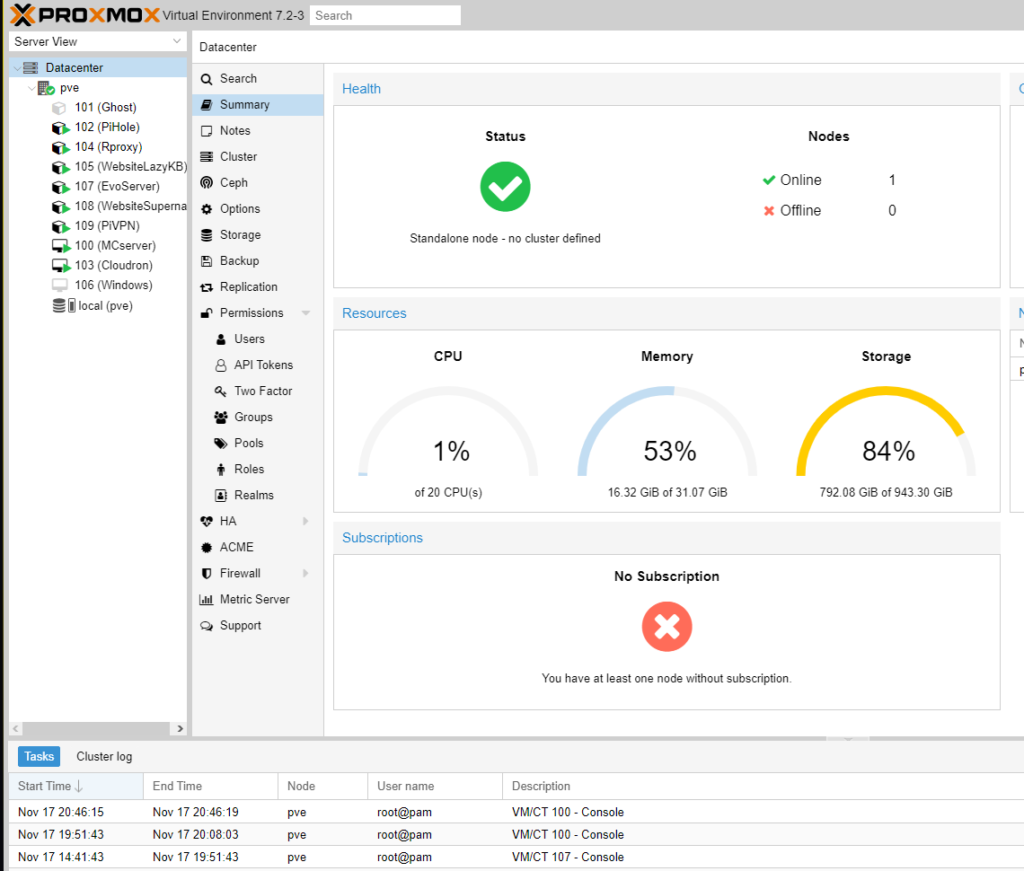

My Homeserver
I have a fairly extensive hobbyist IT setup running a plethora of services, most notably my Minecraft servers. I am currently a hybrid cloud user, which means I have services in the cloud as well as services run on prem (on premises, my home server).
I found a really good deal on a Lenovo gaming PC in September in 2022, it had a really powerful CPU for the price which is what I was looking for since I host Minecraft servers which are very CPU intensive. The machine came with the i7 12700k Alder Lake, 16G memory, 1TB m2 storage, and an Nvidia RTX 3060 GPU. To make it into a server I removed the GPU and upgraded it to 32G memory.
The main reason I bought this machine was to host my Minecraft servers on them. Minecraft is actually a strange workload since it is CPU intensive, however the majority of the load is on a single thread. In most cloud providers the answer to most CPU problems is to throw more cores at them, but that isn’t the case for Minecraft. This home server runs around 6x faster than the cloud server I used to use for it, and I run other services on it at the same time.
The first thing I did when I got the machine was change the OS to ProxMox, a type 1 hypervisor, which allows me to boot multiple virtual machines on my hardware at the same time. This means that this one little box can have as many different machines serving different purposes using any OS I like all at the same time. ProxMox is accessible from a web panel that is accessible under my LAN. The panel gives me an easy to use GUI for setting up my virtual machines.
ProxMox also supports native LXC containers directly on the hardware. Containers are similar to virtual machines but are very lightweight since they share the host’s kernel rather than virtualizing their own. The main use for containers is to run individual applications in their own isolated environments.

